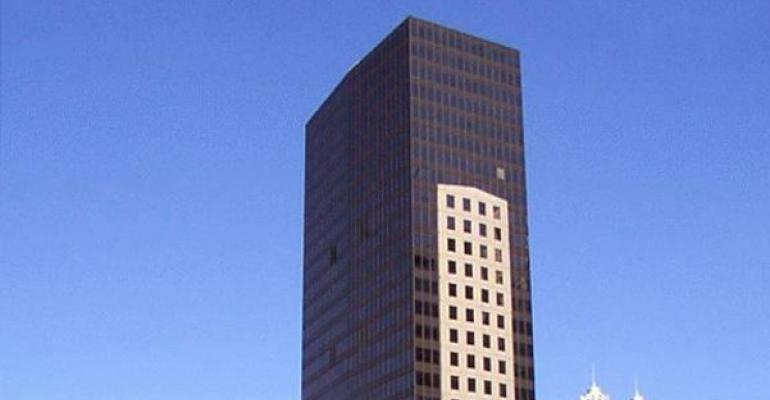American Realty Advisors has launched a new sustainability initiative for its $6 billion commercial real estate portfolio. The institutional investment manager rolled out the green program at 150 N. Wacker Drive, a 31-story office tower in Chicago.
“Sustainability strategies are a top priority for American and for its investors,” says Jay Butterfield, the firm’s managing director of fund/separate account operations. “One trend is increasingly clear: return-driven investors expect a practical and meaningful response to these challenges. By saving resources, we can conserve power, decrease environmental impact and reduce operating costs.”
American Realty Advisors’ first step toward sustainability involved benchmarking each property’s energy and water consumption. Then the firm’s asset management teams identified the properties in the portfolio that could best benefit from an energy audit.
The firm also looked at water conservation efforts and assets located in drought-impacted areas and identified utility and government rebates to assist in the cost of any energy or water efficiency upgrades. Eventually, American Realty Advisors’ plan is to include a case study of each building to develop a best practices checklist that will be implemented across the portfolio.
Butterfield says American Realty Advisors learned two big lessons during its evaluation, “One, sustainability efforts do not need to cost a lot to improve the building’s efficiency and bottom line, and two, involve your tenants with your sustainability efforts,” he says. “We believe ensuring that our tenants have healthy buildings can help our tenant retention.”
Earlier this year, 150 N. Wacker Drive underwent LEED re-certification and is expected to receive LEED Silver certification by the end of 2014. As part of this process, American Realty Advisors conducted a detailed analysis of existing building systems and developed a plan to conserve energy and water.
As part of the plan, American Realty Advisors replaced 115 restroom sink aerators, four showers, and three women’s toilets with lower flow versions (most toilets were already low-flow). By investing in these sustainable features, the firm will cut water usage in the building by 4,000 gallons of water per day, or 1 million gallons annually—a 21 percent reduction in water consumption.
“Investors can expect an ongoing annual savings of up to three times the amount of the initial one-time cost of installing the water conservation fixtures,” Butterfield says.
In addition to saving the water itself, the sustainability strategy at 150 N. Wacker Drive reduced the energy needed to handle water and sewage for the building by 90,750 kilowatt hours per year, which equates to a savings of 62.6 metric tons of carbon dioxide annually. “These are substantial numbers that will move the needle in a big way, both for the environment and for the asset’s bottom line,” Butterfield contends.
Moreover, the firm implemented other energy conservation efforts focused on the HVAC system including reducing the run times of the air handling units. The building’s reflective roof reduces heat gain and helps the HVAC system run more efficiently.
“We have seen that firms successfully reducing a property’s energy usage by 30 percent may realize increases of up to five percent in both net operating income and asset value,” Butterfield says.
American Realty Advisors’ sustainability efforts also go beyond energy and water conservation, Butterfield points out. The firm also uses a green cleaning program that minimizes unhealthy cleaning compounds and encourages recycling by its tenants.
Butterfield declined to disclose specific cost metrics related to 150 N. Wacker, but says the long-term benefits heavily outweighed any initial capital required to implement sustainable features. The anticipated payback period for these specific strategies implemented at the property would be as little as five months.
“It has been our experience that implementing a broad range of sustainability initiatives can have a significant impact on performance of the asset, recouping the initial capital costs within the asset holding period,” Butterfield says.
Based on the success of this initial launch, American plans to explore implementing new water saving features throughout its entire office portfolio, which encompasses over 11.6 million square feet throughout the U.S.
“Sustainable building practices benefit the environment and community at large but can also result in tangible benefits for clients,” Butterfield says. “Sustainability is not only the right thing to do, but also the smart thing to do. Giving portfolios a clear competitive advantage and, as a result, clients are ‘doing well by doing good.’”

